Technician Tales: Common Saxophone Faults – And How to Prevent Them
27th October 2025Saxophones look tough, but they’re full of sensitive parts like pads, springs, and keywork that can be thrown out of alignment with the wrong kind of handling. In the repair workshop, our technicians see certain issues over and over again. Most of them are preventable with better habits and a little more care. Here are the top faults seen by saxophone repairers – and how to avoid them.
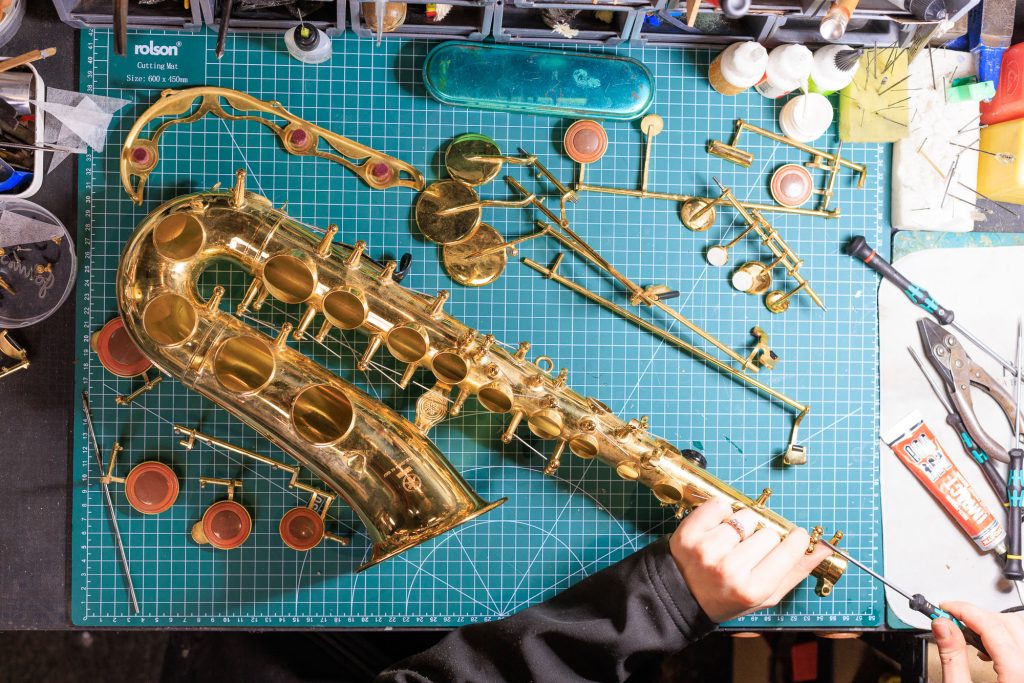
1. Bent Octave Mechanism
One of the most fragile parts of the sax is the octave key on the crook. It’s easy to bend it during assembly, especially if the neck screw is too tight. If the socket is clamped shut, the crook will need to be forced in – which can collapse the tube or bend the octave key loop. When this happens, the octave pad will stay open and stop the sax from playing in the lower register. Always loosen the neck screw before assembly and avoid pressing on the octave key.
2. Sticky Pads
Sticky pads are frustrating and very common across woodwind instruments. Ons saxophone, it is common especially on the G#, low Eb, low C#, and palm keys. These pads are sprung closed and trap moisture, creating a sticky seal between the leather out layer of the pad and the tone hole. Routine care is key. Swab the bore after each session and dry any problem pads carefully. Tools like powder paper and key leaves can help. Avoid fizzy drinks, beer/wine, or sweets before playing – sugars coat the pads and make sticking worse. Even natural saliva has sugar, so stick to water during practice.
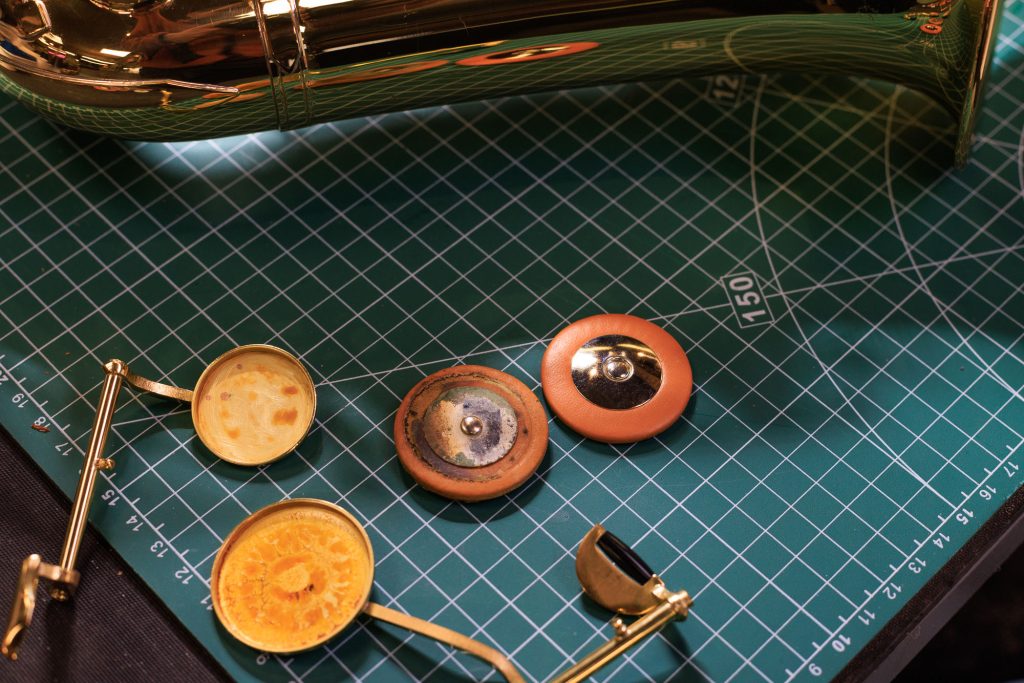
3. Dents and Impact Damage
Brass is softer than it looks. Knocks and bumps will create dents in the hollow body. Depending on where the impact hits, this can cause massive issues with the pillars, tone holes and mechanisms. Sometimes the whole bell/bow section (the bottom U-bent around to the bell flare) can actually twist, making the low notes really hard to achieve. Even inside a case, a fall can do damage. Store your sax carefully and avoid letting it get knocked, sat on, or dropped.
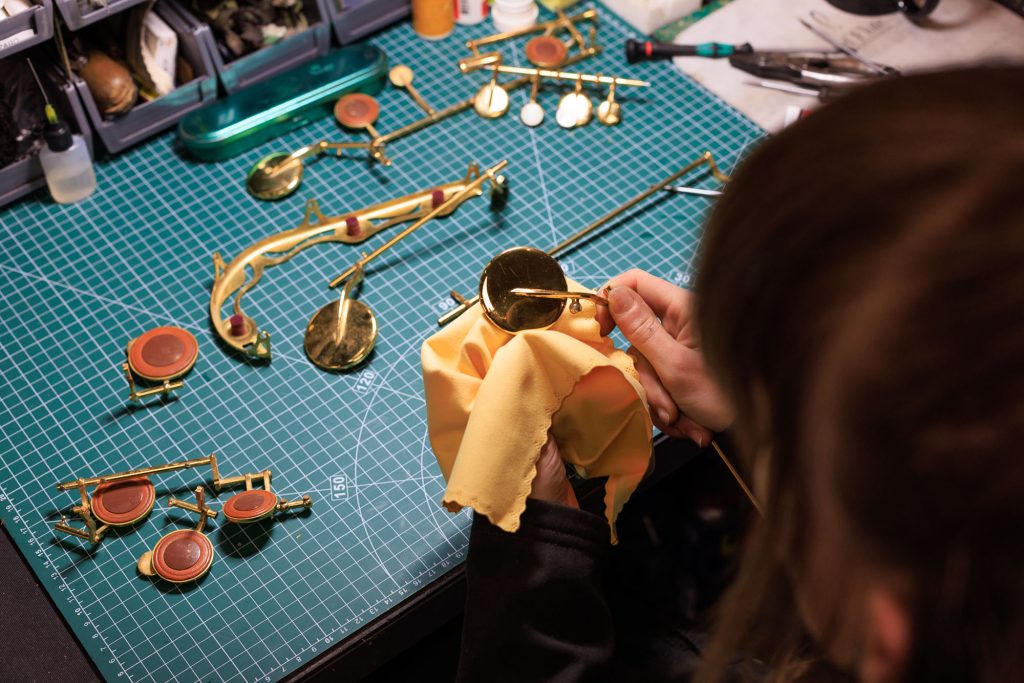
4. Regulation Problems
Many keys on the saxophone interact with each other, these keys can be balanced or ‘regulated’ together via either screws or corks. If a cork falls off or gets compressed, or just worn out, it throws off the balance and causes leaks. This is especially bad on the G# key – if it doesn’t seal, using the table keys can completely cut off the sound. If the sax feels unpredictable, it’s likely a regulation issue that needs a technician.
5. Bent Keys from Lifting Incorrectly
Many players accidentally bend keys by lifting the sax out of the case by the keywork. It might feel natural, but those levers aren’t made for weight-bearing. Even a small bend can affect regulation or feel. Always lift the sax by the bell or body tube – never by the keys.
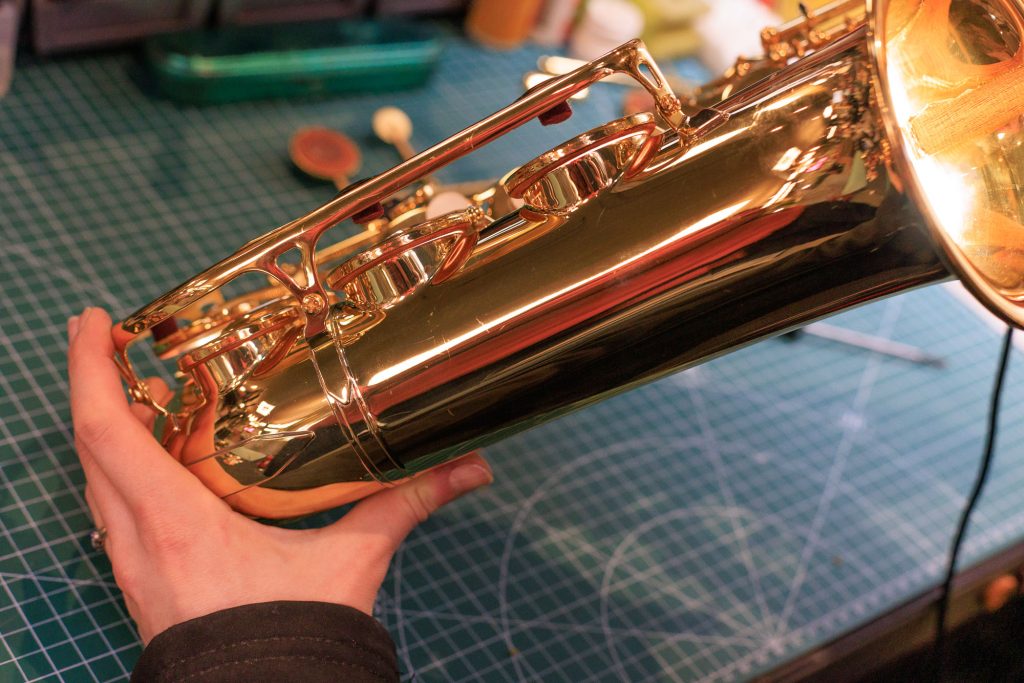
6. Gurgling Bottom Notes
If your low notes (like D and below) sound strange or gurgly, the issue might be your mouthpiece position. Pushing the mouthpiece too far on or leaving it too far off changes the shape of the air column inside the bore and causes turbulence. Use a tuner to set your concert A, then adjust the mouthpiece accordingly. This usually clears up those low-note problems.
7. Popped Springs During Cleaning
A common avoidable issue is dislodged needle springs. When cleaning, cloths can catch and pop springs out of place. This causes floppy keys and weak response. Wipe gently and be mindful of the spring areas.
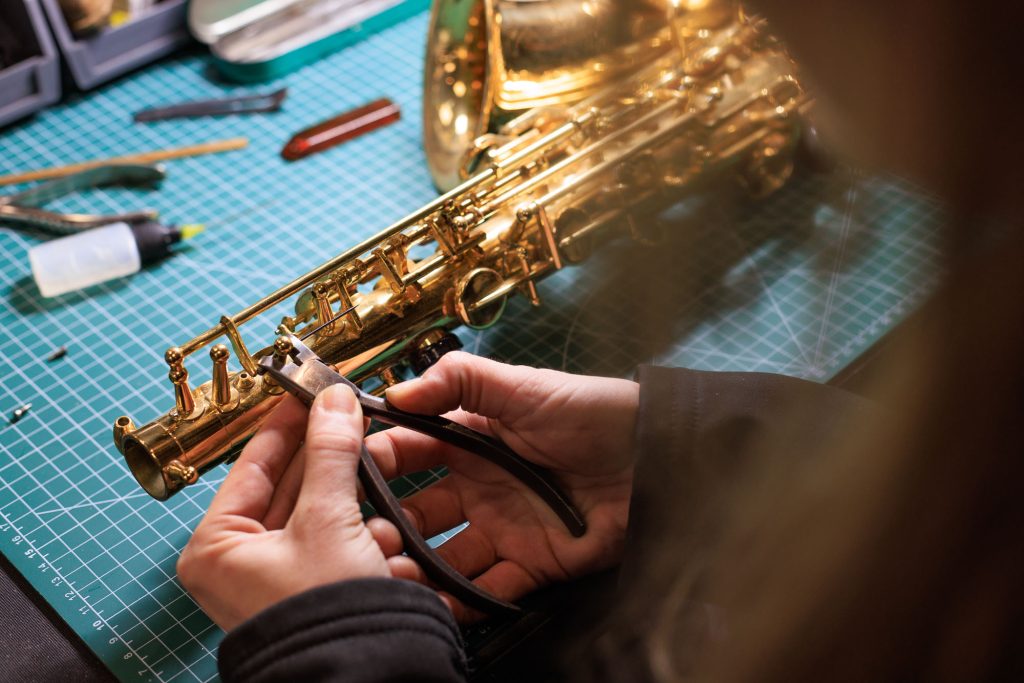
8. Scratching from Rings and Belts
Tenor saxes especially are prone to scratches on the bell and stack from belts and jeans rivets. Rings can scratch the crook during assembly. While cosmetic, this damage builds up and can lower the instrument’s value. Wear soft clothing and remove jewellery before playing.
Final Thoughts
Saxophones need care, not muscle. Most repairs we see are preventable. Be gentle, be aware, and form good habits. Your sax will last longer and play better – and you’ll spend more time making music and less time waiting on repairs.
